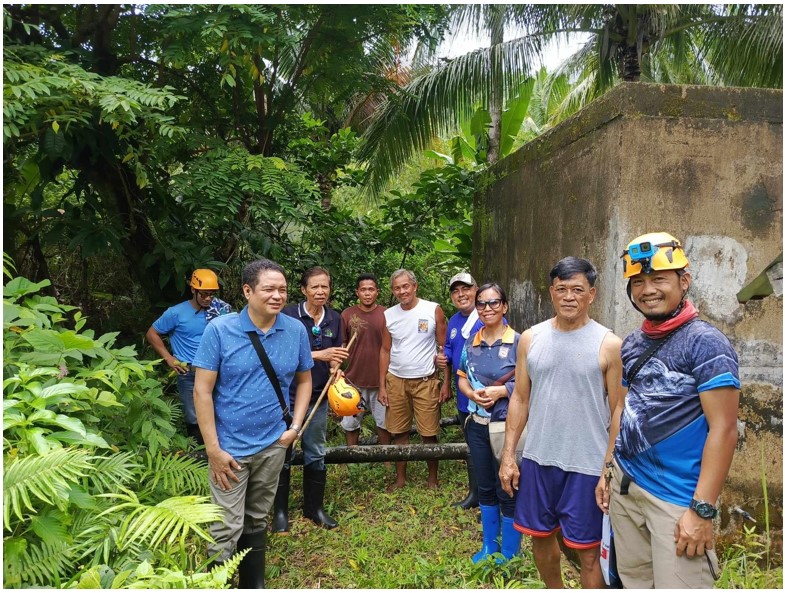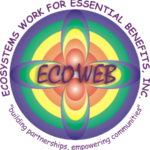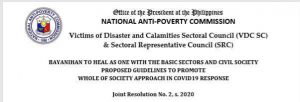
The need for the rehabilitation of the water system project was initially identified by the community of Barangay Amontay.
In a proactive step towards bolstering community resilience, the Survivor and Community-led Response to Crisis Approach integrating Anticipatory Actions (SCLR-AA) has made significant strides in San Francisco. On July 10, 2024, an on-site visit was conducted by the Project Monitoring Team (PMT) and Project Implementation Team (PIT) to evaluate the existing water source and explore an alternative water supply to supplement the current system in Barangay Amontay.
This dedicated team included MDRRMO Aladdin Sumampong, RN, MPDO Engr. Christopher Gilos, EnP, MSWDO Mary Grace Escopete, RSW, CCRG Chairperson Engr. Luisito Valmoria, and ECOWEB Staff Mark Anthony Amarga, together with the Amontay BLGU Team led by Barangay Chairperson James Pullos. Their collaborative effort emphasizes the importance of community engagement and participatory approaches in addressing local challenges.

The collaborative effort emphasizes the importance of community engagement and participatory approaches in addressing local challenges.
The need for the rehabilitation of the water system project was initially identified by the community of Barangay Amontay during the Community Reflection and Discovery Session (CRDS) held on May 9, 2024. This session was part of the Listen, Discover, and Enhance (LDE) methodology of Community Engagement introduced by the ERC Flagship Initiative (ERC-FI) led by the UN-Office for the Coordination of Humanitarian Affairs (UN-OCHA) in the Philippines. The municipality of San Francisco is one of the pilot municipalities of the ERC-FI and both the LGU and ECOWEB are partners of UN-OCHA in implementing the Flagship Initiative in the Caraga Region.
The LDE Methodology was interfaced with the Survivor and Community-led Response (sclr) approach integrating Anticipatory Action that is piloted in San Francisco by ECOWEB in partnership with the municipal LGU and partner local organization, Concerned Citizens Response Group (CCRG). The CRDS was a crucial moment for the community, where they were allowed to propose their priority actions for resilience on the basis of their community collective assets identified during the Resilience Based Participatory Community Appraisal (ReBPCA), the first tool of the LDE Methodology.

The active participation and input have been instrumental in shaping the direction of the resilience building priorities of the Barangay that includes the water system rehabilitation project.
On February 13, 2024, a ReBPCA session was conducted in Barangay Amontay facilitated by a team of facilitators coming from various agencies operating in the province of Surigao del Norte. The Team was led by the ERC-FI Team of UN-OCHA and the activity was conducted with the partnership of the LGU of San Francisco. The ReBPCA in Barangay Amontay identified the existence of at least 3 springs as among the most valued community assets. It was also identified that the barangay have skilled and willing labor to help in the implementation of a water project.
On May 9, 2024, the CRDS, the second tool of the LDE Methodology, was conducted as a follow-through activity of the ReBPCA. The CRDS, conducted in partnership with the Office for the Coordination of Humanitarian Affairs (OCHA) and other agencies, saw the participation of a diverse group of 75 representatives, including 12 women, 12 fisherfolks and farmers, 10 senior citizens, 12 persons with disabilities, 18 Indigenous peoples (IPs), and 11 barangay and purok officials. Their active participation and input have been instrumental in shaping the direction of the resilience building priorities of the Barangay that includes the water system rehabilitation project.

This action of the LGU Team inspired the people of Amontay.
Exactly a month after the identification of the Water system as the top priority, the ocular inspection of the existing water system and other springs was conducted. The month-long gap from prioritization to inspection was quite quick compared to other projects. This action of the LGU Team inspired the people of Amontay. It made them feel that if they participated in identification and planning of projects, duty bearers and support agencies are quicker to act.
The data and insights gathered during the ocular visit will support the community’s proposal for the water system rehabilitation project and the drafting of a detailed plan and program of work that would be presented to other stakeholders for possible support. This initiative is not just about addressing immediate needs but also about building a sustainable future for Barangay Amontay, ensuring that every member of the community has access to a reliable water supply.
Together, through the SCLR-AA approach with the LDE Methodology, we are paving the way for a resilient and self-sufficient community, ready to face future challenges with strength and unity.
Currently, ECOWEB and Municipal LGU has established a pilot co-funding of PhP 1.5 million intended for micro-grants to support community-led initiatives for resilience building in San Francisco. The water system is targeted to be among the projects proposed for support following sclr approach.💧🤝🌱
| Kin Barkly Tibang


